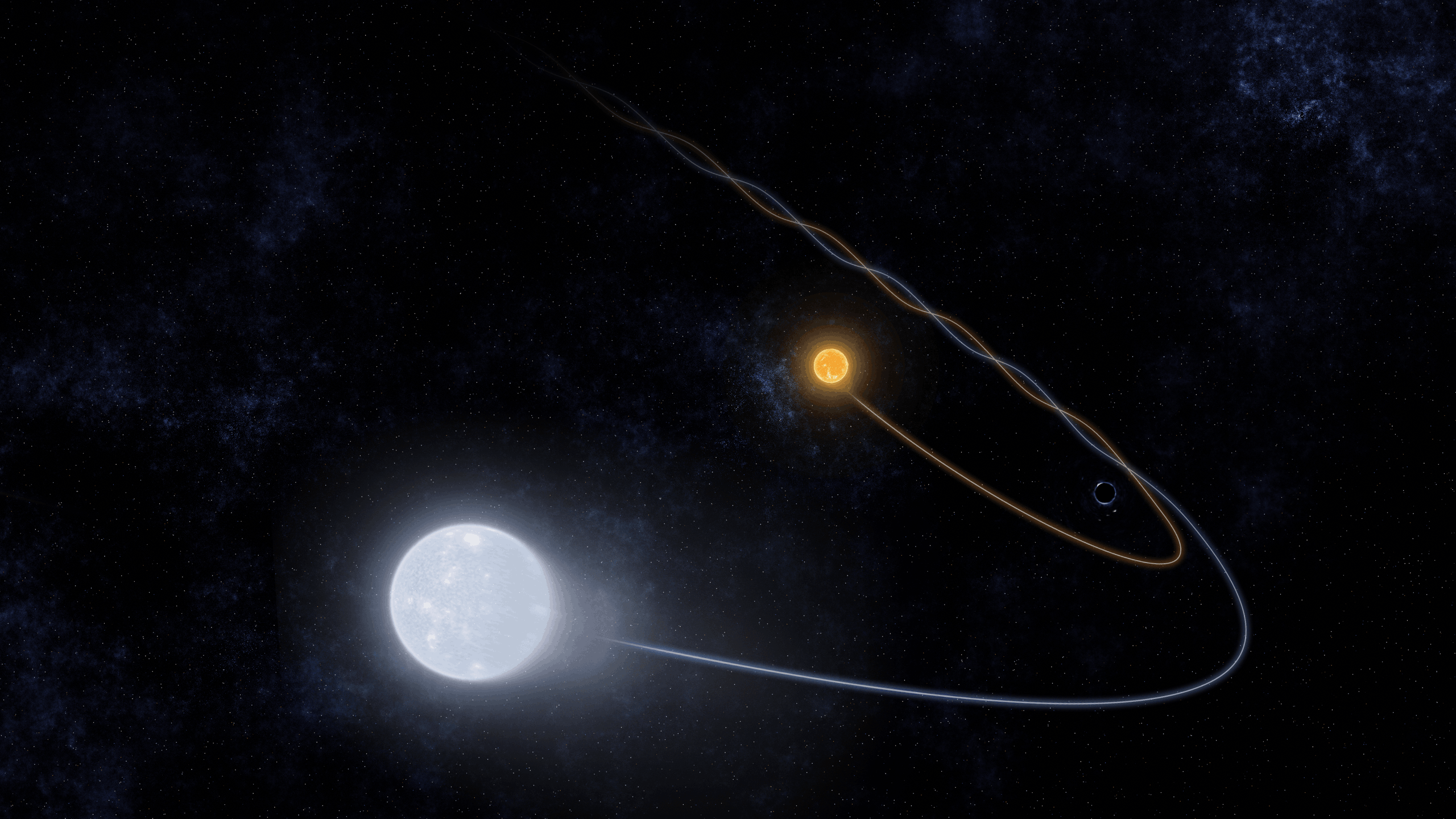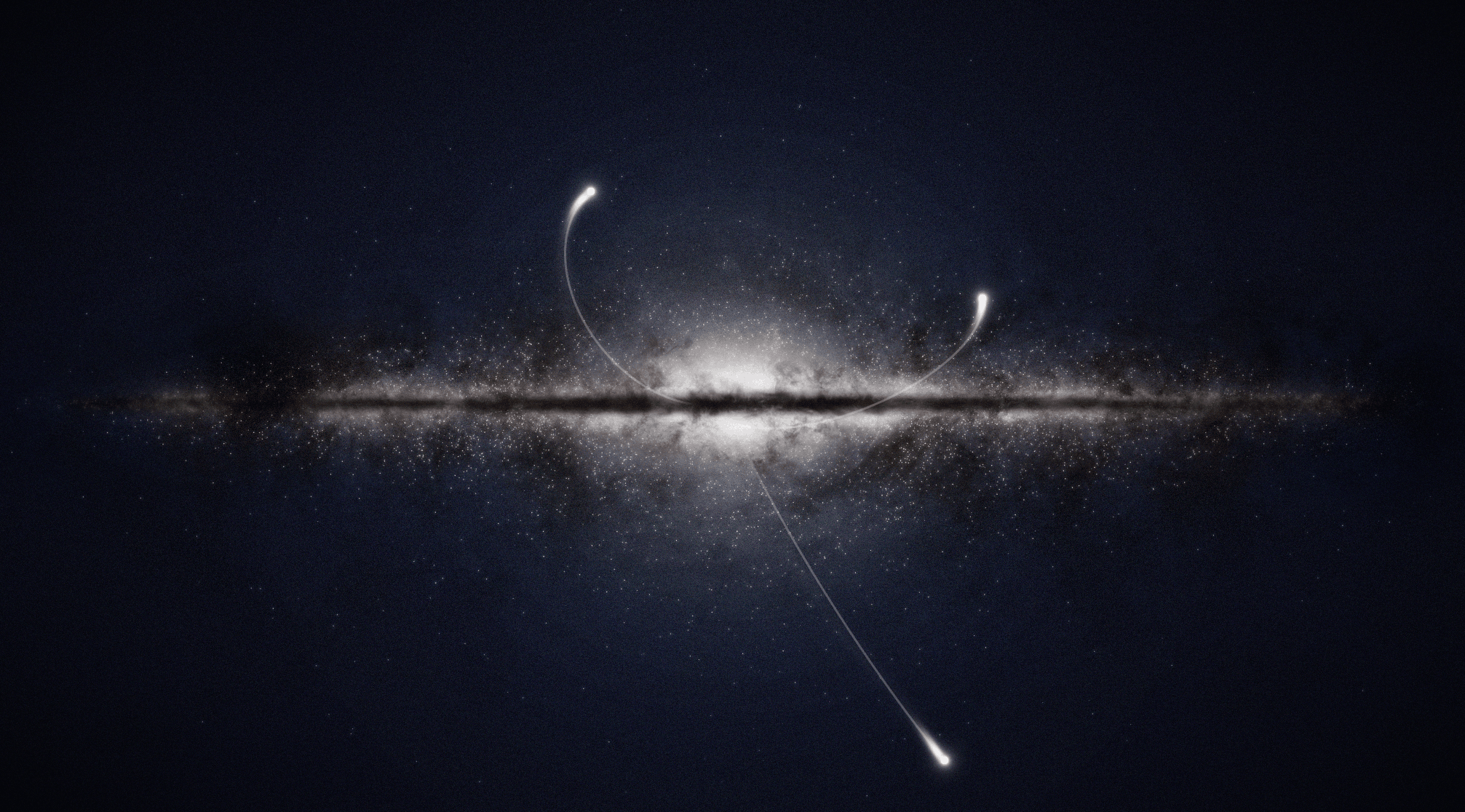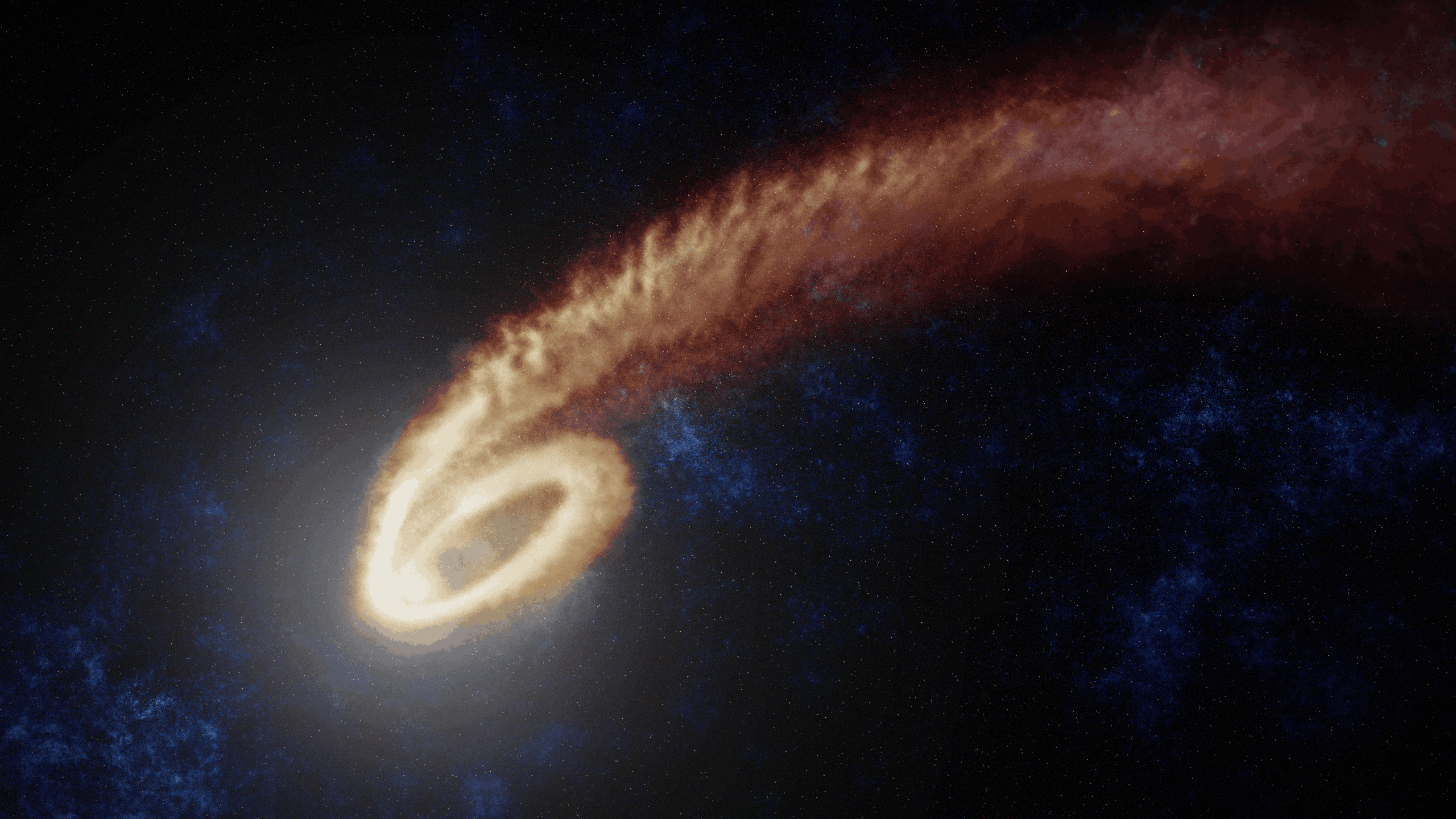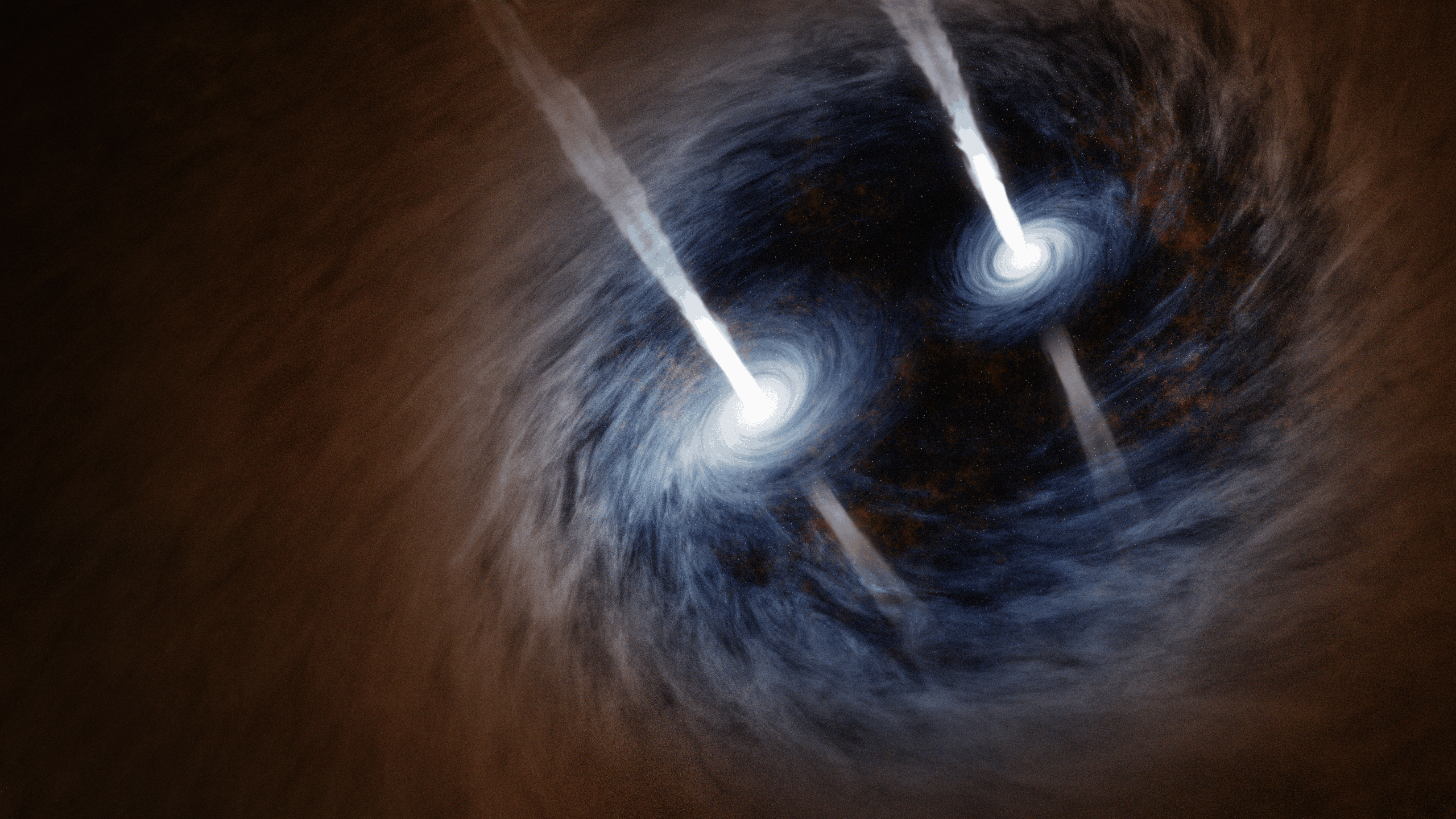ERC VEGA-P: Galactic Nuclei Phenomena
This is the project website for ERC VEGA-P at Leiden Observatory. We use theory and observations to study galactic nuclei phenomena, such as hypervelocity stars, tidal disruption events, and accreting massive black hole binaries. We have a particular interest in understanding the galactic centre of our own Milky Way.

Binary Dissociation via the Hills Mechanism
When a double star system (or a “stellar binary”) passes close enough to a black hole, it can be split apart by the tidal forces from the black hole. One of the stars can become captured in a bound orbit around the black hole. In exchange, the other star can be ejected from the system at high velocity. This process of dissociating binaries via close encounter with a third object is known as the Hills mechanism, and it plays an important role in our efforts to study the galactic centre.
Hypervelocity Stars
Our galaxy, the Milky Way, hosts a so-called massive black hole at its centre. This black hole, known as “Sagittarius A star” (or Sgr A* for short), is over four million times more massive than our sun, and sits in a dense cloud of gas and stars. Stellar binaries in this cloud are common enough that some will pass close enough to Sgr A* to be dissociated via the Hills mechanism. One star enters a bound orbit around Sgr A*, while the other is ejected from the galaxy as a “hypervelocity star.” We use theory to predict the rate of production of hypervelocity stars, and use observations to search for them; by combining both, we can make inferences about the galactic centre environment.


Tidal Disruption Events
Similar to how a black hole can disrupt a stellar binary, if a single star passes even closer to the black hole, it can get ripped apart into a stream of plasma. This is known as a “tidal disruption event,” and the light it generates can be used to study the mass and spin of the disrupting black hole. Our group models this process in order to improve inferences about the disrupting black hole, which usually resides beyond our galaxy, and would otherwise be invisible to us.
Accreting Massive
Black Hole Binaries
Galaxy pairs often merge together to form a new galaxy. The massive black hole in each of their cores therefore begin to interact, and gradually become gravitationally bound together. These “massive black hole binaries” can feed on gas in the merged galaxy’s centre, heating the gas, which produces detectable light. We are interested in hunting for these accreting massive black hole binaries, and understanding the properties of their population across the cosmos.

Our Team
Click through to learn more about the work our team does
The artwork on this website was created by Benjamin Amend https://www.artstation.com/amendbj






